This is my go-to Easy Homemade Bread recipe that always turns out great, uses simple pantry ingredients and makes my house smell amazing. The bread is so fluffy, delicious and is perfect for sandwiches.
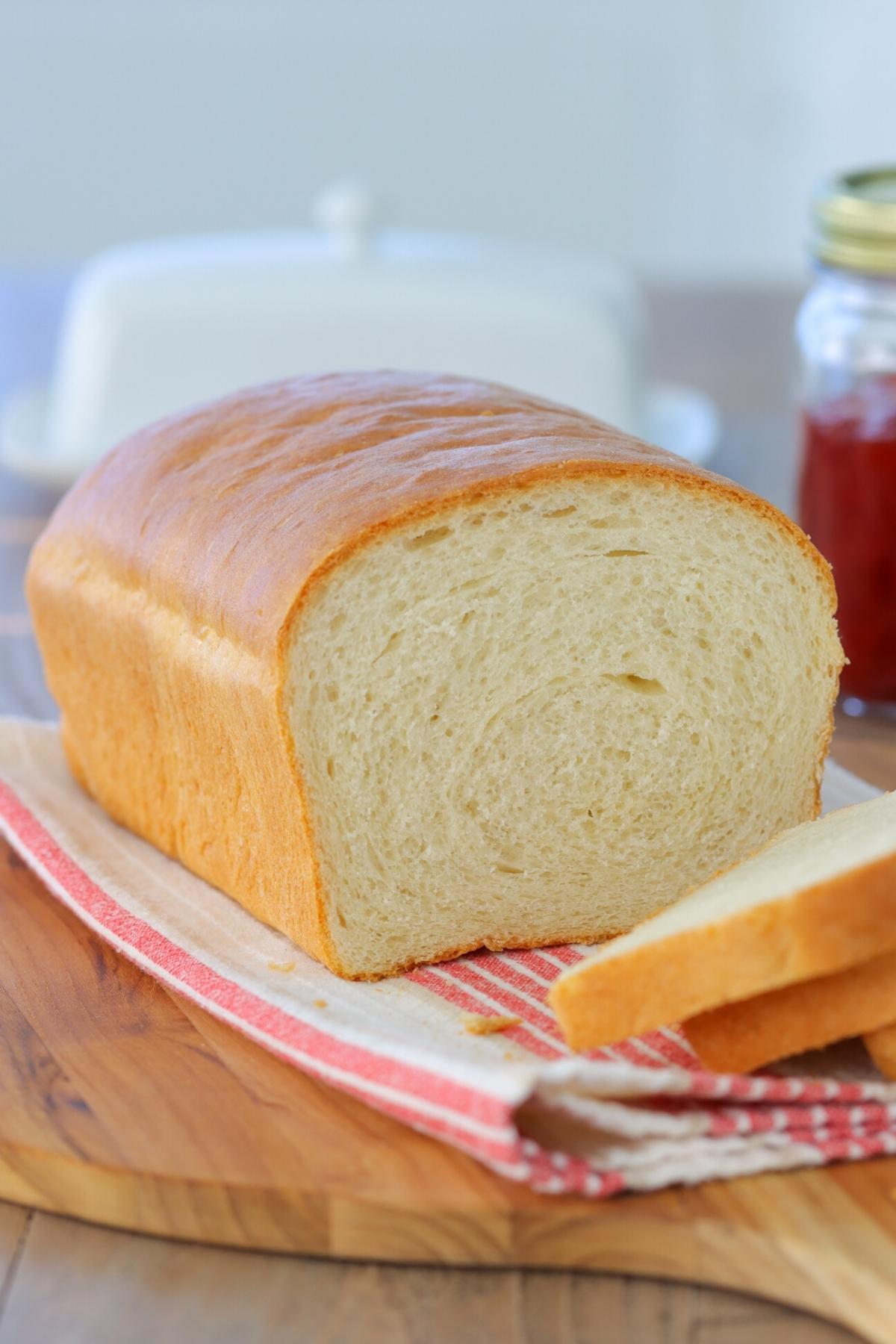
An easy homemade bread recipe is the perfect place to start if you want to start making bread from scratch. There's something so satisfying with making your own bread - it is absolutely amazing. I love experimenting with all kinds of recipes for bread, but when I'm in the mood for simplicity, this is the one I go for.
Jump to:
Why You'll Love This Simple Bread Recipe
Perfect for beginners: If you’re new to baking bread or just want an easy recipe, this is the perfect place to start.
Quick and easy: This recipe is a breeze—there aren’t many steps to follow, so you can enjoy fresh homemade bread without spending hours in the kitchen.
Absolutely nothing like homemade bread: Freshly baked bread is a game-changer. It’s amazing with Homemade Strawberry Jam or alongside a warm bowl of Chicken Noodle Soup.
A family favorite: Baking a loaf of bread brings everyone together—there’s nothing like the smell of fresh bread filling the house. You’ll have the whole family crowding around the kitchen, ready to grab a warm slice!
Ingredients:
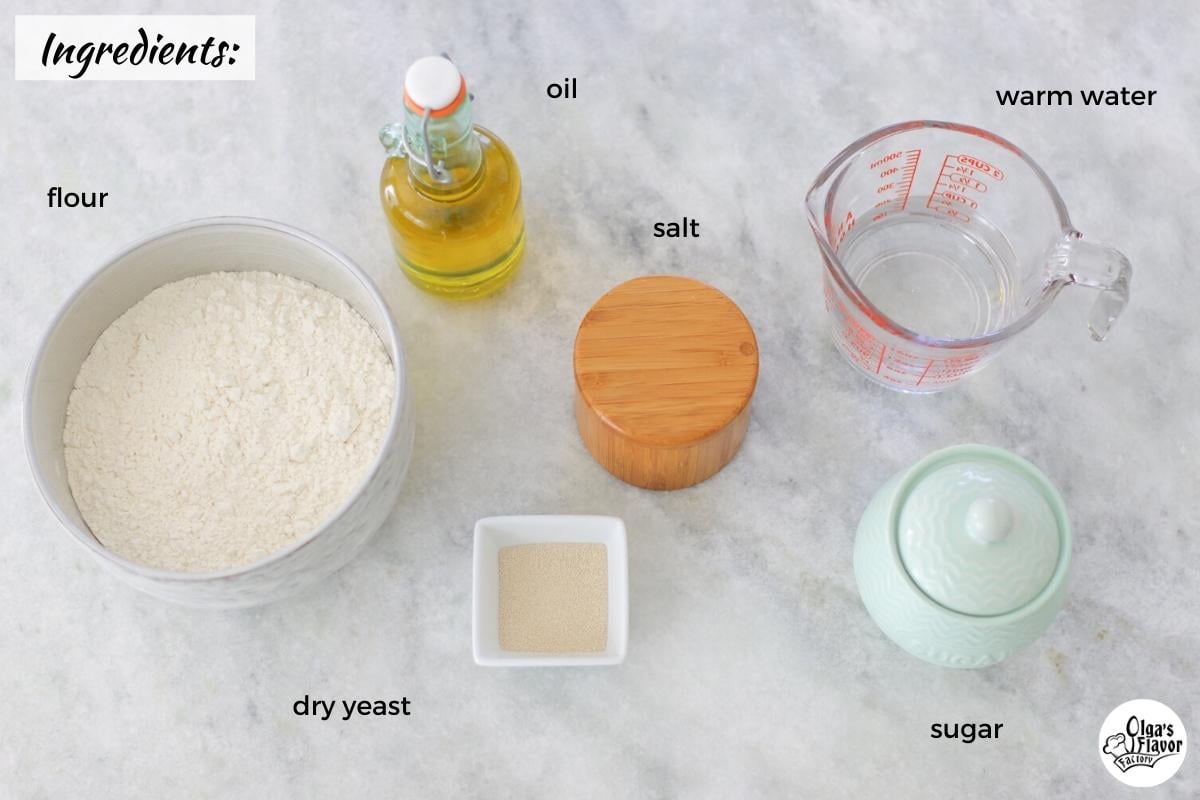
- warm water (110-115 degrees Fahrenheit) - This temperature is perfect for activating the yeast without killing it—just warm enough to help it get to work.
- dry yeast (active dry yeast or instant yeast) *see note below
- sugar - Regular granulated sugar works fine, but I often swap it for honey.
- oil - Any neutral oil works, but I like using olive oil best, followed by avocado oil.
- flour - Bread flour is the best choice for a chewy, airy texture, but all-purpose flour works too.
- salt
The complete list of ingredients and their exact measurements can be found in the recipe card below.
Active Dry Yeast vs. Instant Yeast
They are very similar and can be used interchangeably in recipes. However, active dry yeast needs to be dissolved in warm water first, before using it in a recipe. Instant yeast can be added in dry.
If you're not sure which yeast you have, just add it to warm water first to be safe. The water should be about 90-110 degrees Fahrenheit. If the water is too hot, it will kill the yeast and your dough won't rise.
Is Your Yeast Still Active?
It's such a bummer if you make the bread dough and then wait and wait and it doesn't rise.
To check if your yeast is still active, sprinkle the yeast into some warm water (100-110 degrees Fahrenheit) with a little bit of sugar. Set it aside for 5-10 minutes. It should rise and foam up. It’s ready to use! If your yeast doesn’t do that, it’s time to get new yeast.
P.S. Store your yeast in the refrigerator or even your freezer so it stays fresh longer.
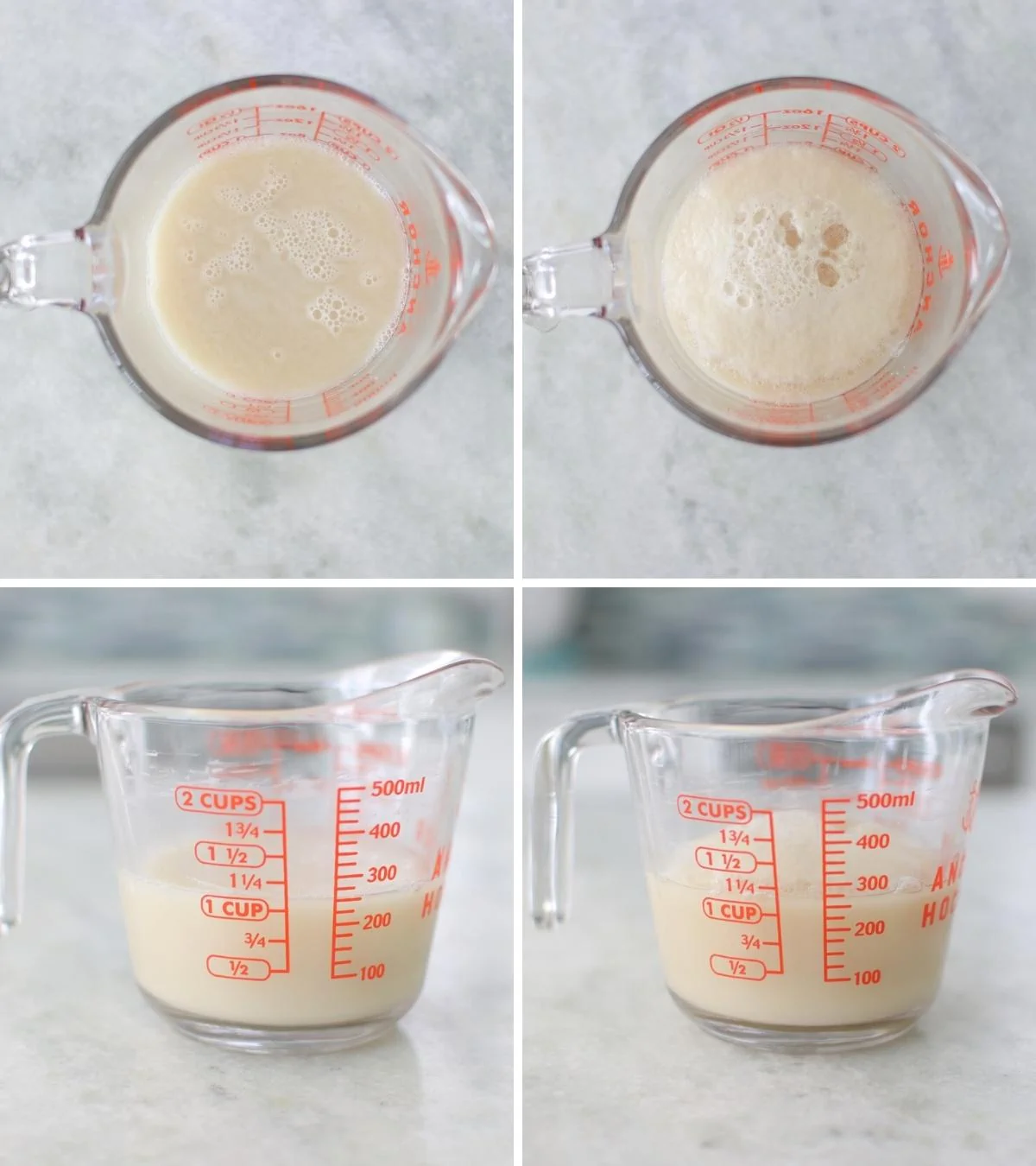
How To Make Homemade Bread
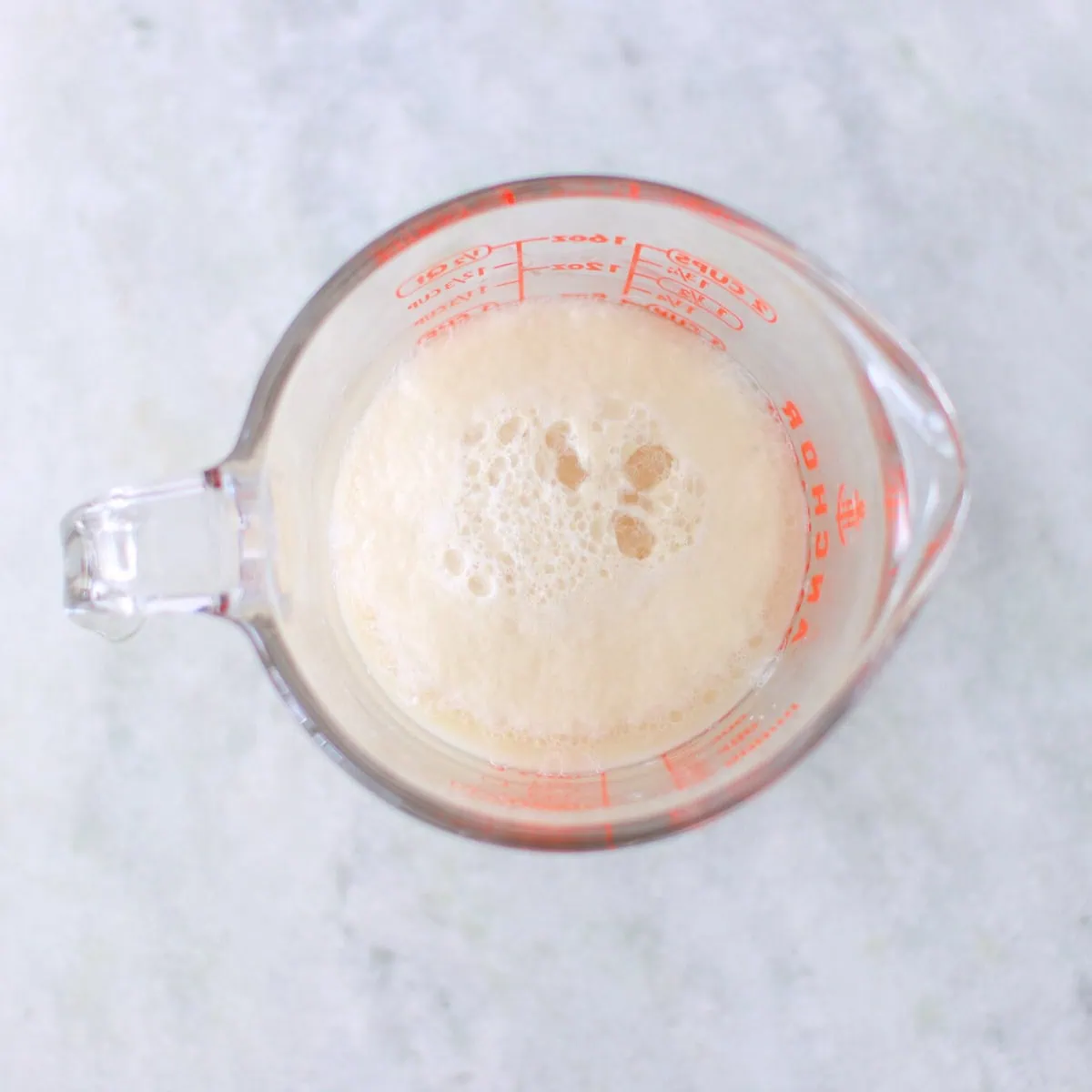
- Dissolve the yeast in the warm water with half of the sugar. (If you're not sure if your yeast is good, set it aside for about 5 minutes, it should foam up.)
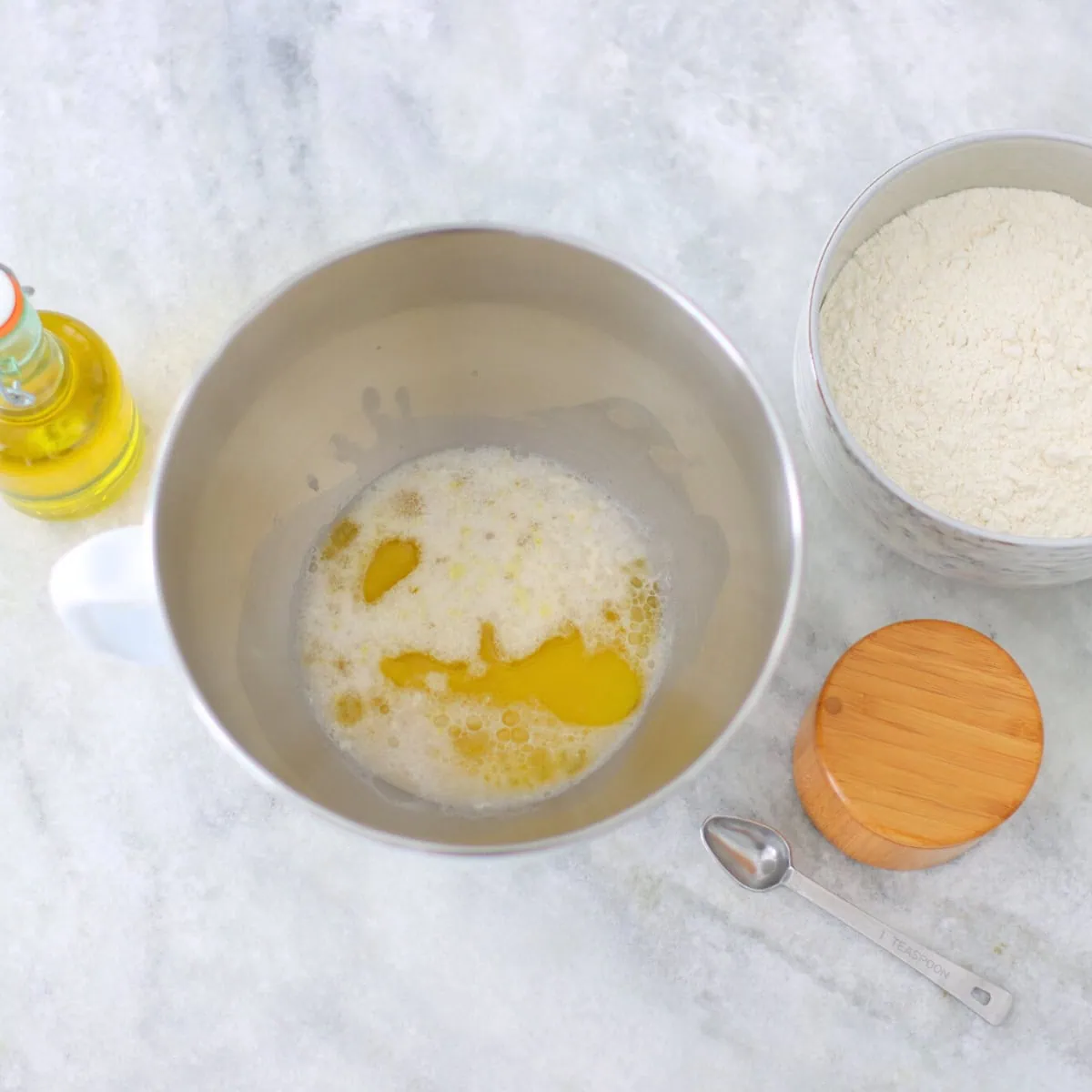
- Mix the liquid ingredients. Pour the water with yeast into a large bowl of a stand mixer. Add the rest of the sugar and the oil.
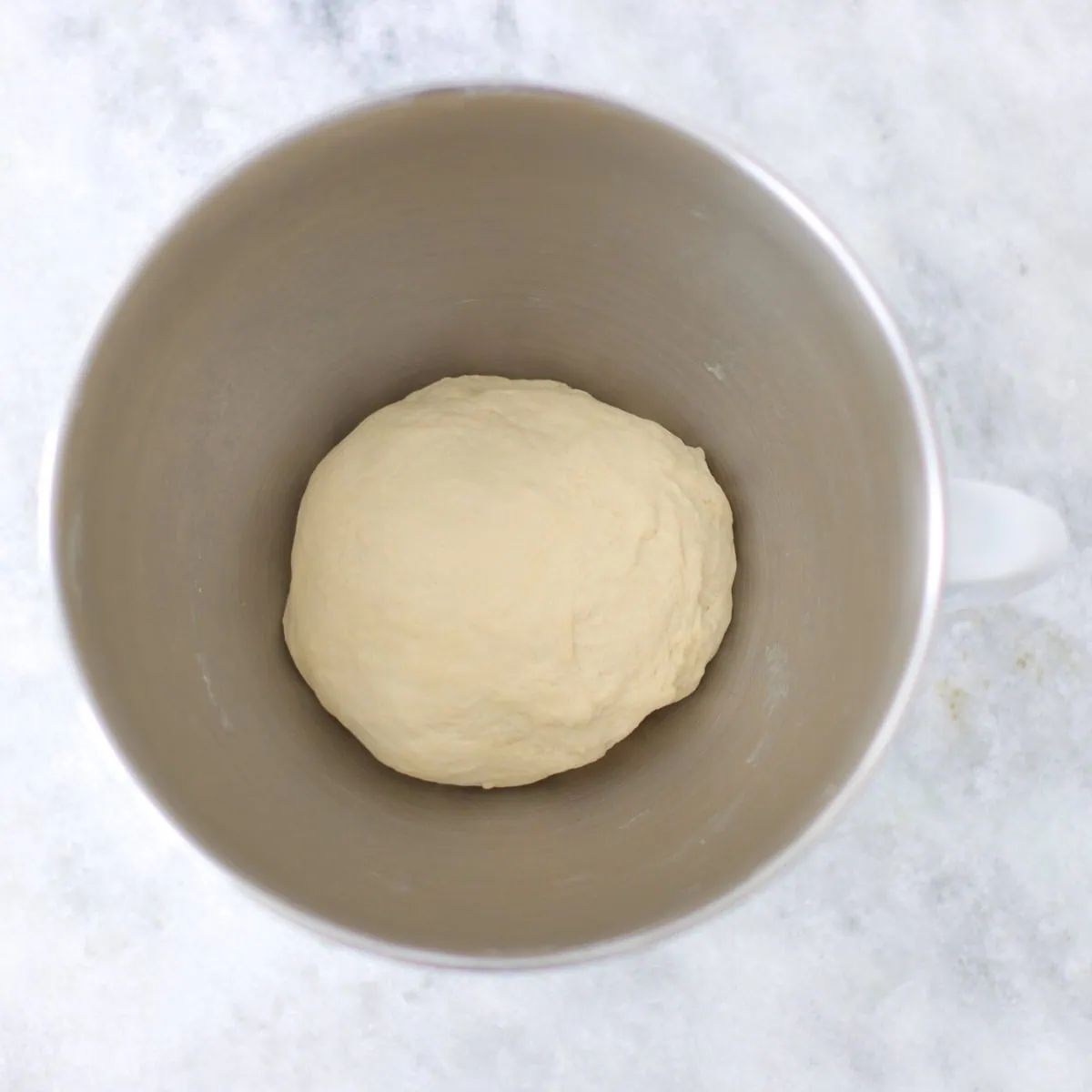
- Add the dry ingredients. Mix in half of the flour, starting on low speed until it’s well combined. Gradually add the remaining flour and salt, continuing to mix until all the flour is fully incorporated. Knead the dough for at least 5 minutes, up to 10 minutes, if you're doing it by hand.
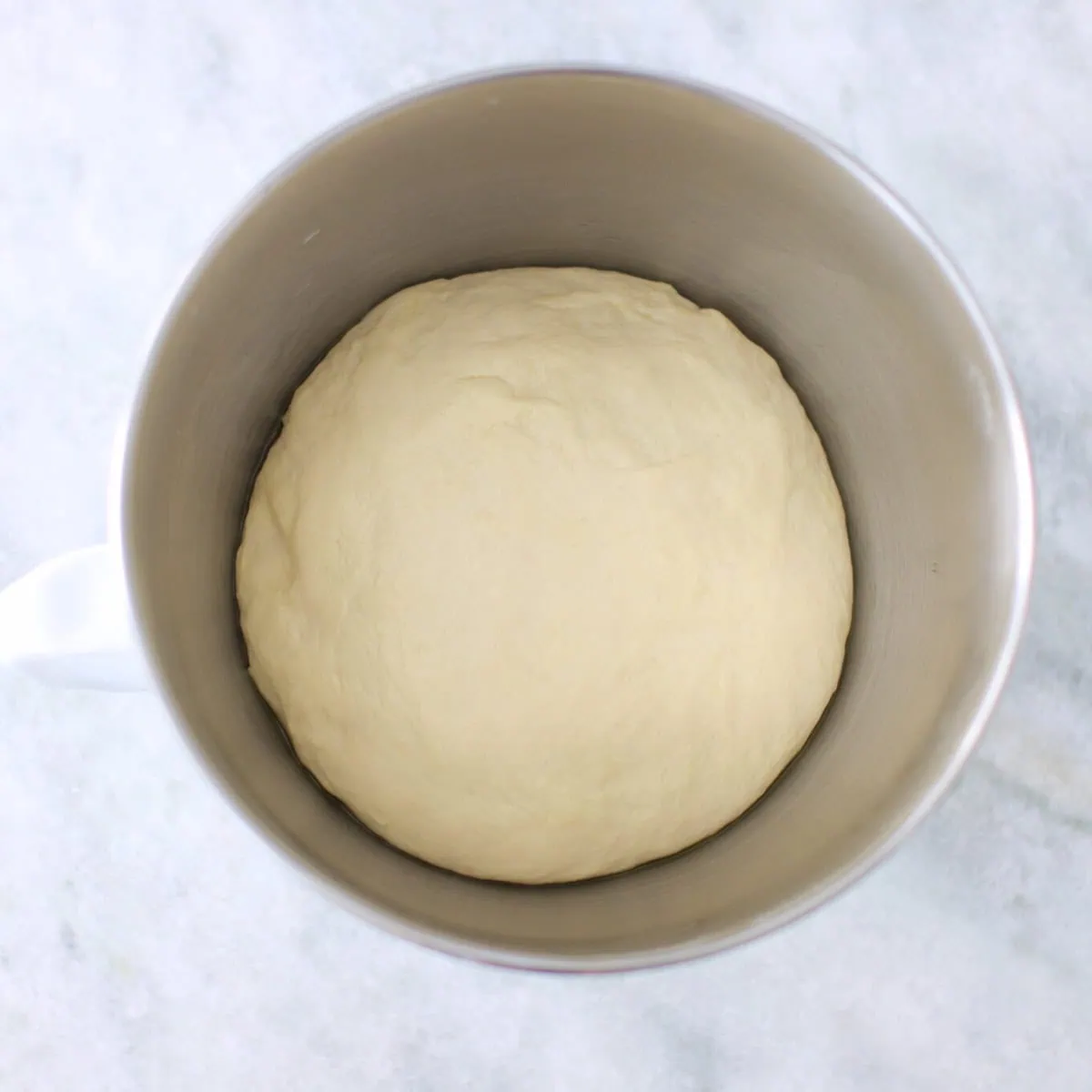
- Set the dough aside to rise until doubled in size, anywhere from 30 minutes to 1 hour, depending on the temperature in your home. Meanwhile, preheat the oven to 375 degrees Fahrenheit.
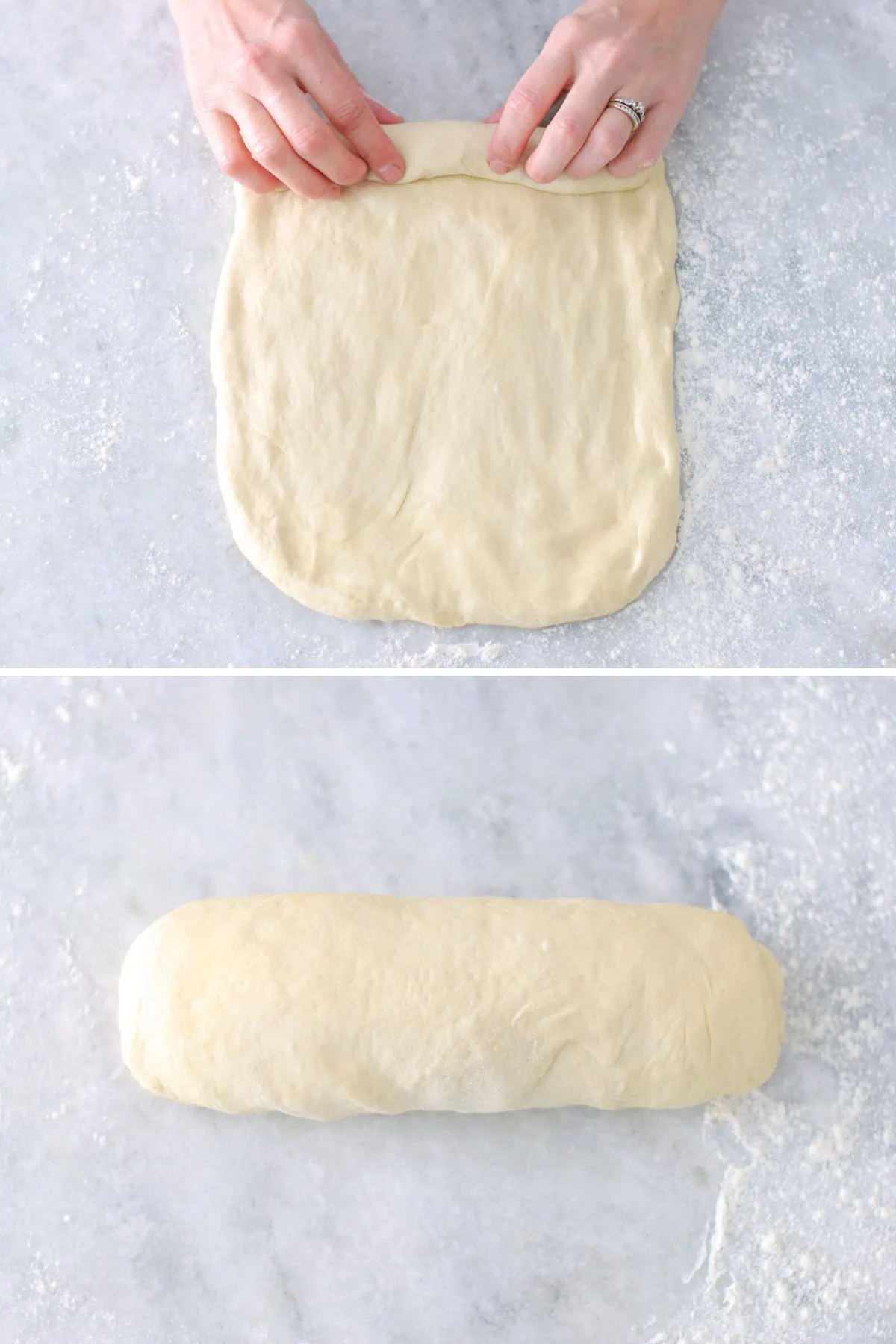
- Shape the dough. When the dough has doubled, place the dough on the counter and shape it into a rectangle. It should be roughly the width of your bread pan. Roll it up tightly, starting with the short side until you have a neat loaf. Place it seam side down into your bread pan. (Mine is about 9 X 5 inches)
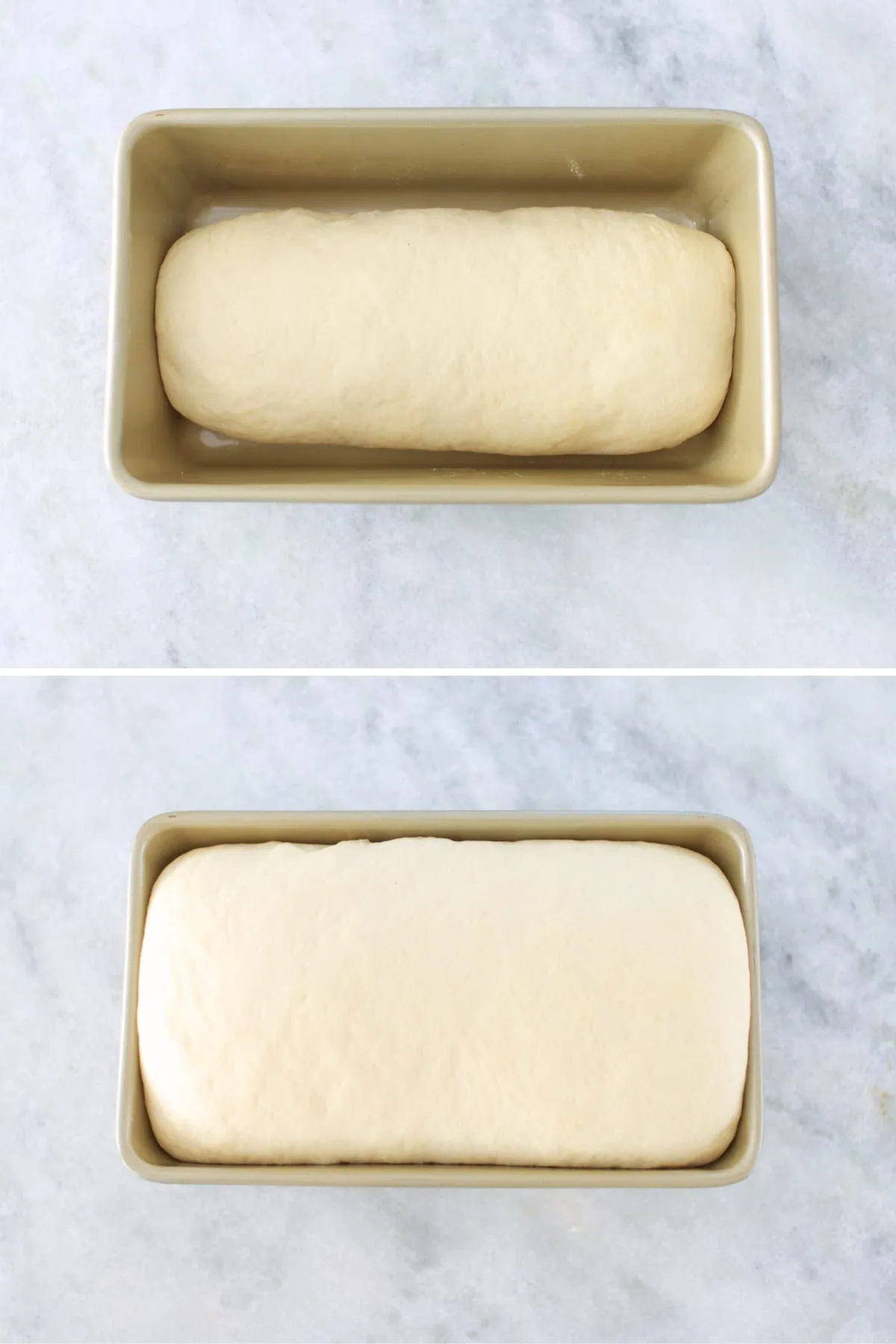
- Set aside to rise until doubled again. The dough should rise slightly over the edges of the bread pan.
- Bake in the preheated oven for 23-25 minutes. Enjoy!
Expert Tips
Here are a few tips that make this easy bread recipe even more simple and perfect.
Oil the bowl: Before setting your dough to rise, brush a little oil on the bottom and sides of the bowl. This helps the dough come out easily once it’s risen, making the process much smoother.
Cover it up: Use plastic wrap (or a shower cap) to cover the bowl. This will keep the dough from drying out and create a nice, moist environment for it to rise properly.
Roll up the bread dough before placing it in the bread pan to rise. While it may seem like an extra step, rolling the dough helps create better structure. Dough that’s simply plopped into the pan tends to be denser and lacks the structure needed for a light, airy loaf. By flattening the dough into a rectangle and rolling it tightly, you’ll achieve a neater shape, a more tender crumb, and a loaf with better structure.
When you get the bread out of the oven, brush the top with butter. It will be even more delicious, but will also make the bread have a glossy finish and will make the crust softer.
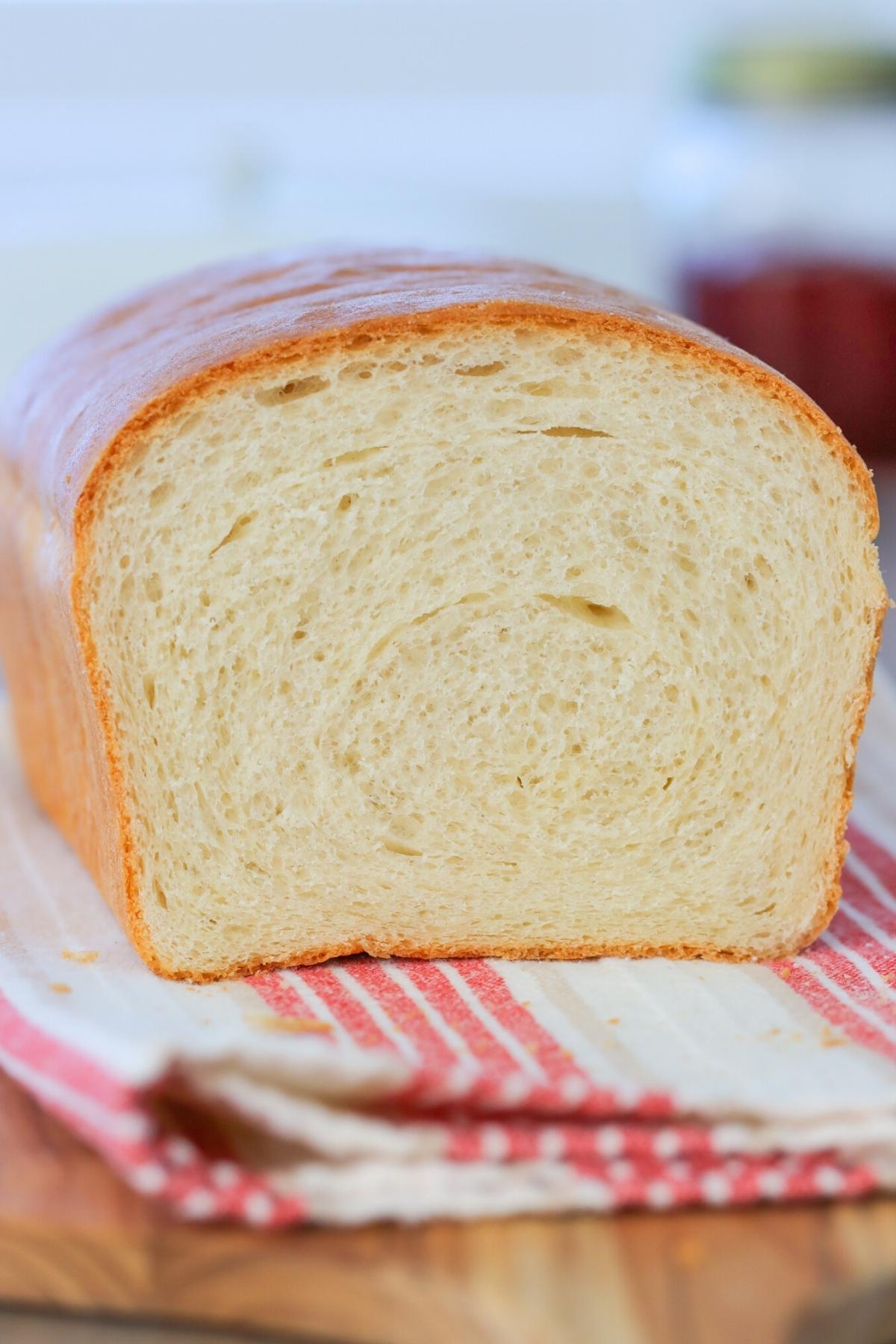
Quick Ways to Speed Up Dough Rising
Want your dough to rise faster? Here are a couple of my secret tricks to speed up the process ☺️.
- Use a Heated Blanket: Wrap your dough bowl in a heated blanket. This creates a cozy, warm environment that helps activate the yeast, so your dough rises faster.
- Use a Warm Garage or Laundry Room: A warm garage or small laundry room can work wonders for dough rising. These spaces often stay cozy and warm, providing the perfect environment for the yeast to activate and help your dough rise faster.
- Try the Instant Pot for Faster Rising: If you have an Instant Pot, place the dough inside the inner chamber and set it to the yogurt setting. The warm temperature (around 100°F) creates the perfect environment for your dough to rise in about half the usual time. It’s a quick and efficient way to speed up the process.
Frequently Asked Questions
Cover the bowl and the bread pan with plastic wrap. You can also brush the top of the dough with oil for extra insurance.
Homemade bread doesn't have any preservatives in it like store bought bread, so it will not stay fresh as long. (This is never a problem in our family - it's so delicious, it gets eaten much faster!)
Store the bread in a paper bag or wrapped in a clean kitchen towel if you don't want it to get softer. It will last at room temperature for a few days.
If you want to keep it fresh longer than 3-4 days, store it in the refrigerator for 7-9 days.
Yes! Bread freezes really well. Make an extra loaf and freeze it, or, cut a loaf in half if you have a smaller family. Make sure the bread is wrapped tightly, preferably in multiple layer. Freeze for 1-3 months. Here's a detailed post all about how to freeze bread.
Thaw at room temperature. (Remove the bread from the bag/container, wrap it in a towel while thawing, so it absorbs any condensation.)
If your bread has big air pockets or gaping holes, it’s likely that the dough wasn’t rolled up tightly enough. Make sure to roll the dough snugly when shaping it before placing it in the pan. This helps eliminate large air pockets and ensures a more even crumb, giving you a soft, uniform texture.
More Delicious Bread Recipes You Will Love
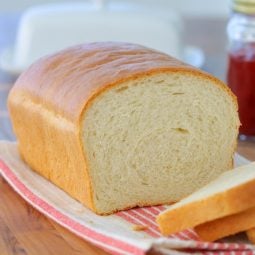
Easy Homemade Bread Recipe
Ingredients
- 1 cup warm water (110-115 degrees F)
- 2 ¼ teaspoon dry yeast
- 2 Tablespoons sugar or honey
- 2 Tablespoons oil olive oil, avocado oil (any neutral oil will work)
- 3 - 3 ¼ cups flour bread flour or unbleached all purpose flour
- 1 teaspoon salt
- butter optional, for brushing on top of bread
Instructions
- Warm up the water until it's a nice, bath water temperature. (See note.) Sprinkle in the yeast and half the sugar. Mix it until the yeast and sugar dissolve. The yeast should get foamy within a few minutes.
- Pour all the liquid ingredients (water, yeast, sugar and oil) into a large bowl of a stand mixer and mix to combine.
- Add half the flour to the bowl and start on low speed and mix the dough with a dough hook attachment, until the it comes together. Add the remaining flour and salt, gradually increasing the speed and knead the dough for 5-10 minutes.
- Brush the bowl and coat the dough in a little bit of oil, cover the bowl with plastic wrap and set aside to rise until it doubles in size 30-90 min.
- Preheat the oven to 375 degrees.
- When the dough has doubled, place the dough on the counter and shape it into a rectangle. It should be about the width of your bread pan. (I use a 9 X 5 inch bread pan.)
- Roll it up tightly, starting with the short side and then place it seam side down into a greased loaf pan.
- Cover loosely with plastic wrap or a towel and set aside until the dough doubles once again, 30 minutes to an hour.
- Bake in the preheated oven for 23-27 minutes.
- Take the bread out of the bread pan within 5 minutes and let it cool on a rack. Brush the top of the bread with butter to make it more glossy and to make the crust softer.
- Store the bread, wrapped or in a bag, at room temperature, for 3-4 days. Store in the refrigerator if you need it to last 5-9 days. Bread can also be frozen for 1-3 months.
Notes
- Water Temperature: The water should be between 110-115°F. This is the ideal range for activating the yeast without killing it. If it’s too hot (above 120°F), it could kill the yeast; too cold, and it won’t activate properly. You can check the temperature with a kitchen thermometer or test it by dipping your finger in—it should feel warm but not hot.
- Bread Flour vs. All-Purpose Flour: Bread flour has a higher protein content, which gives the bread its chewy, airy texture. If you don’t have bread flour, all-purpose flour will work just fine, though the loaf might be a little softer. If you have access to it, I recommend using bread flour for the best results.
- Sweeteners: You can substitute honey for sugar in this recipe if you prefer. Honey adds a subtle sweetness and can give the bread a slightly richer flavor.
- Optional Step - Brush with Oil: Before baking, you can brush or spray the top of the dough with a little oil. This will help create a more golden crust and prevent the dough from sticking to the plastic wrap.

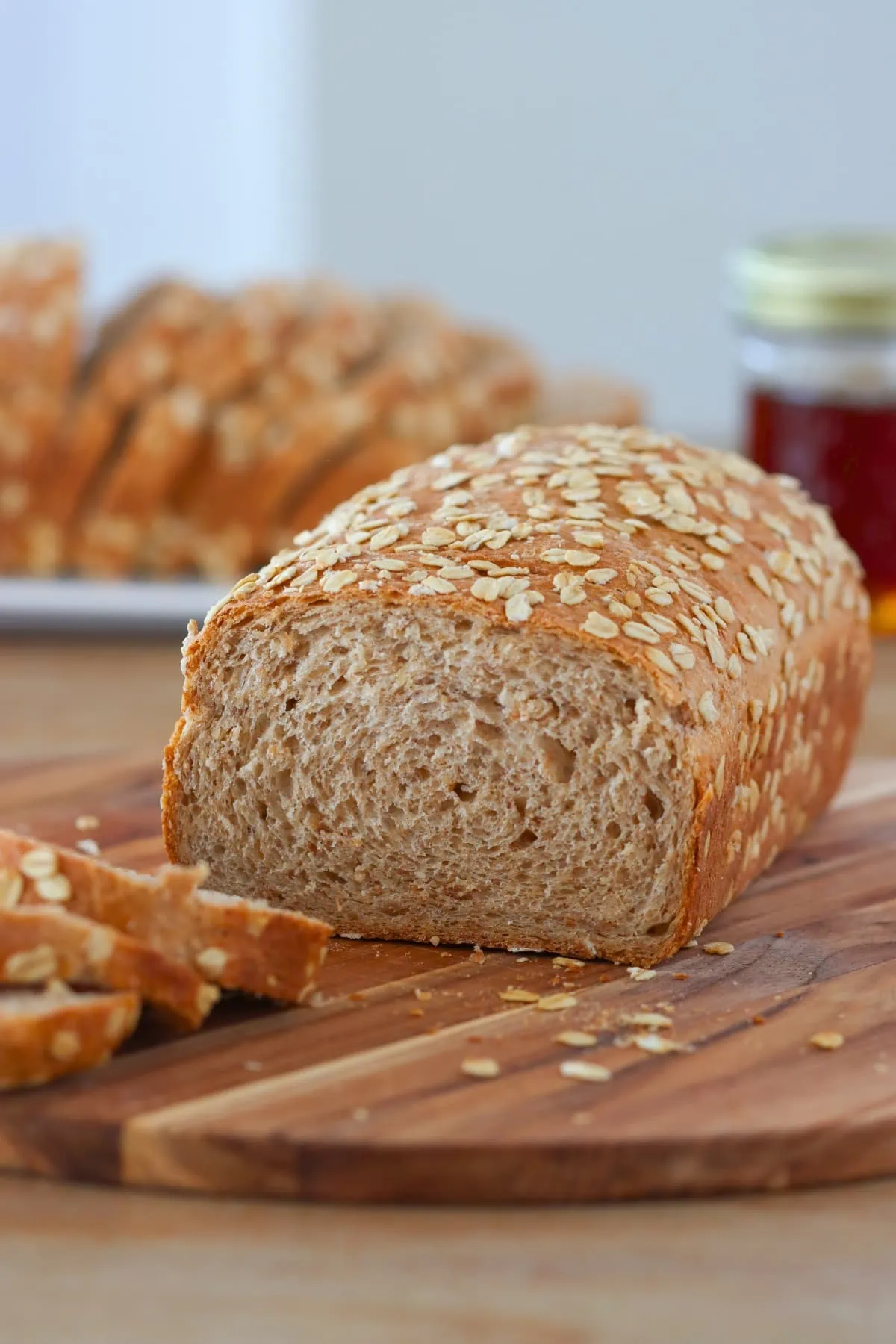
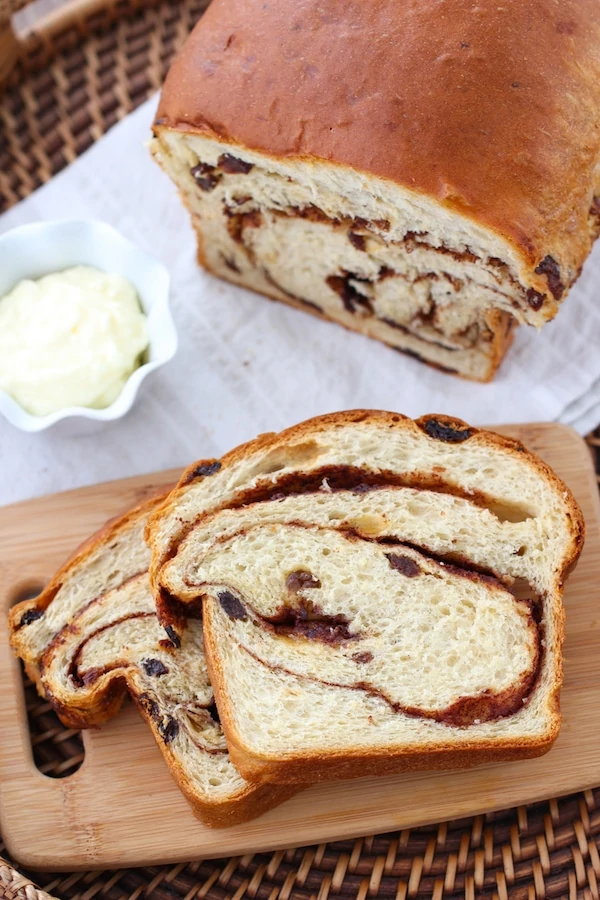
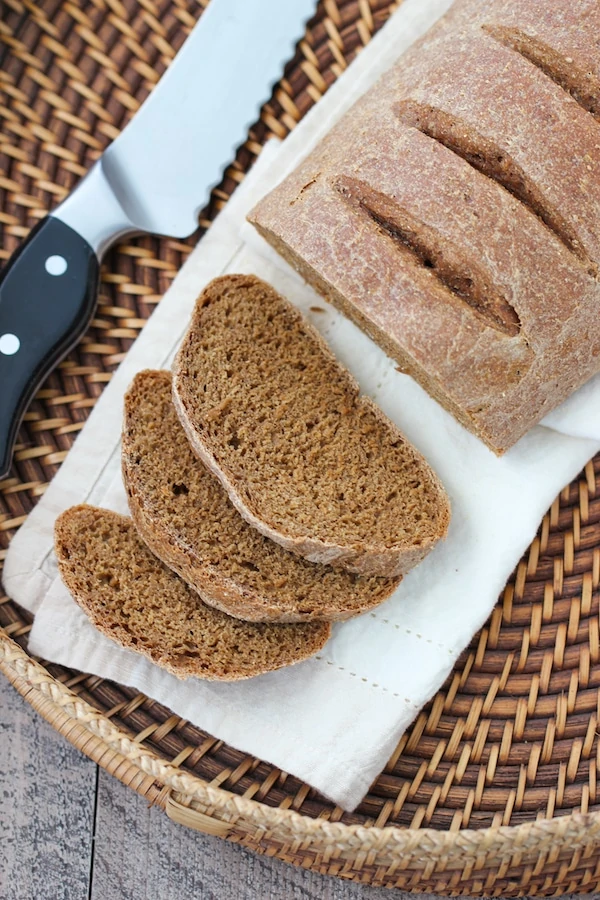
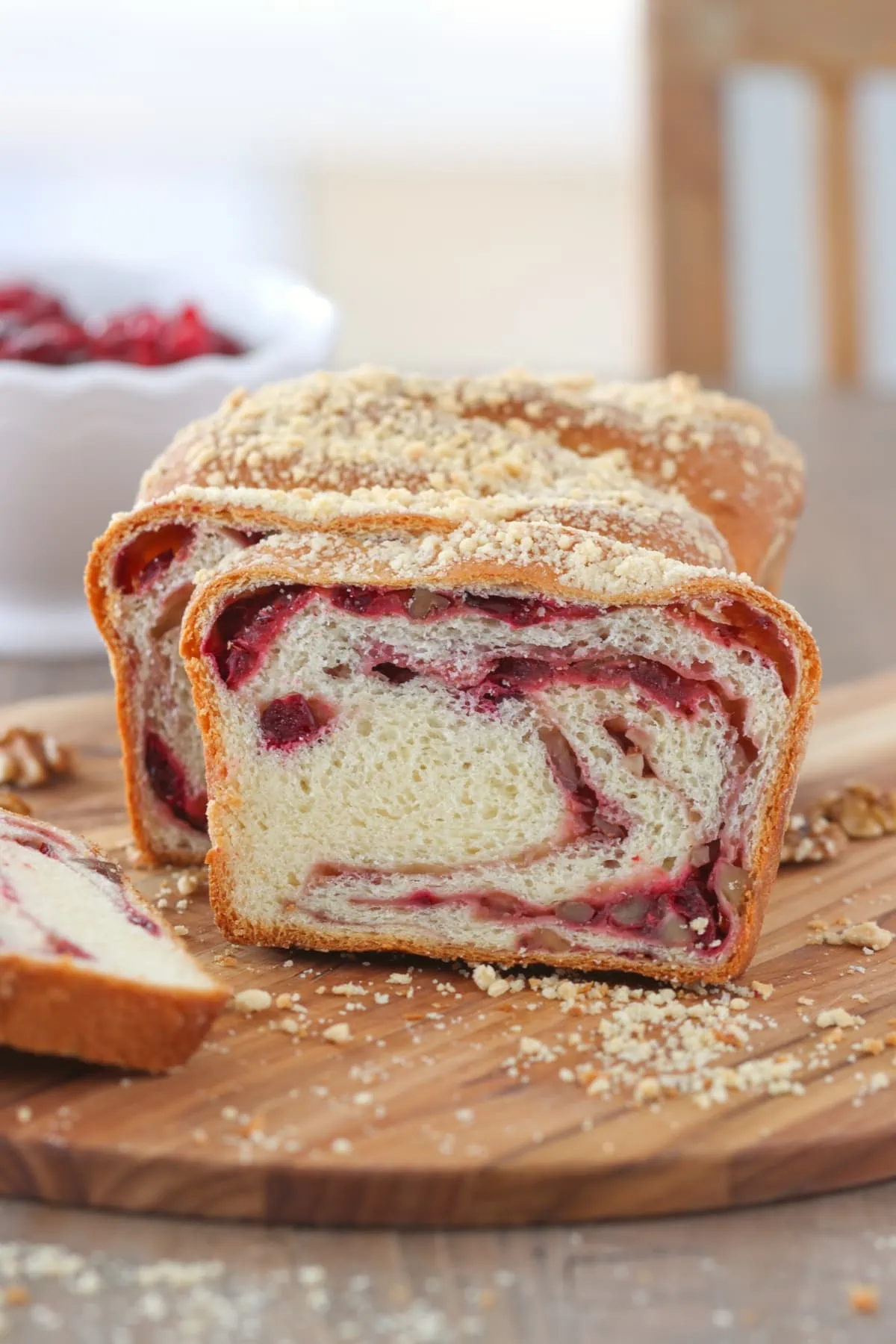
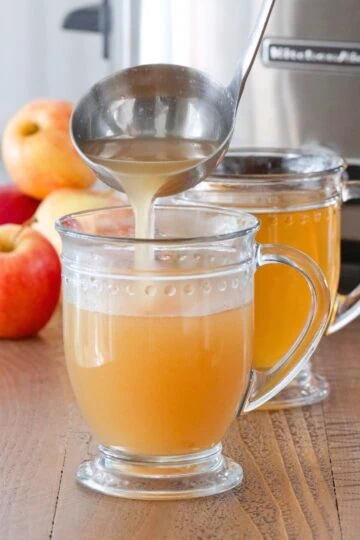

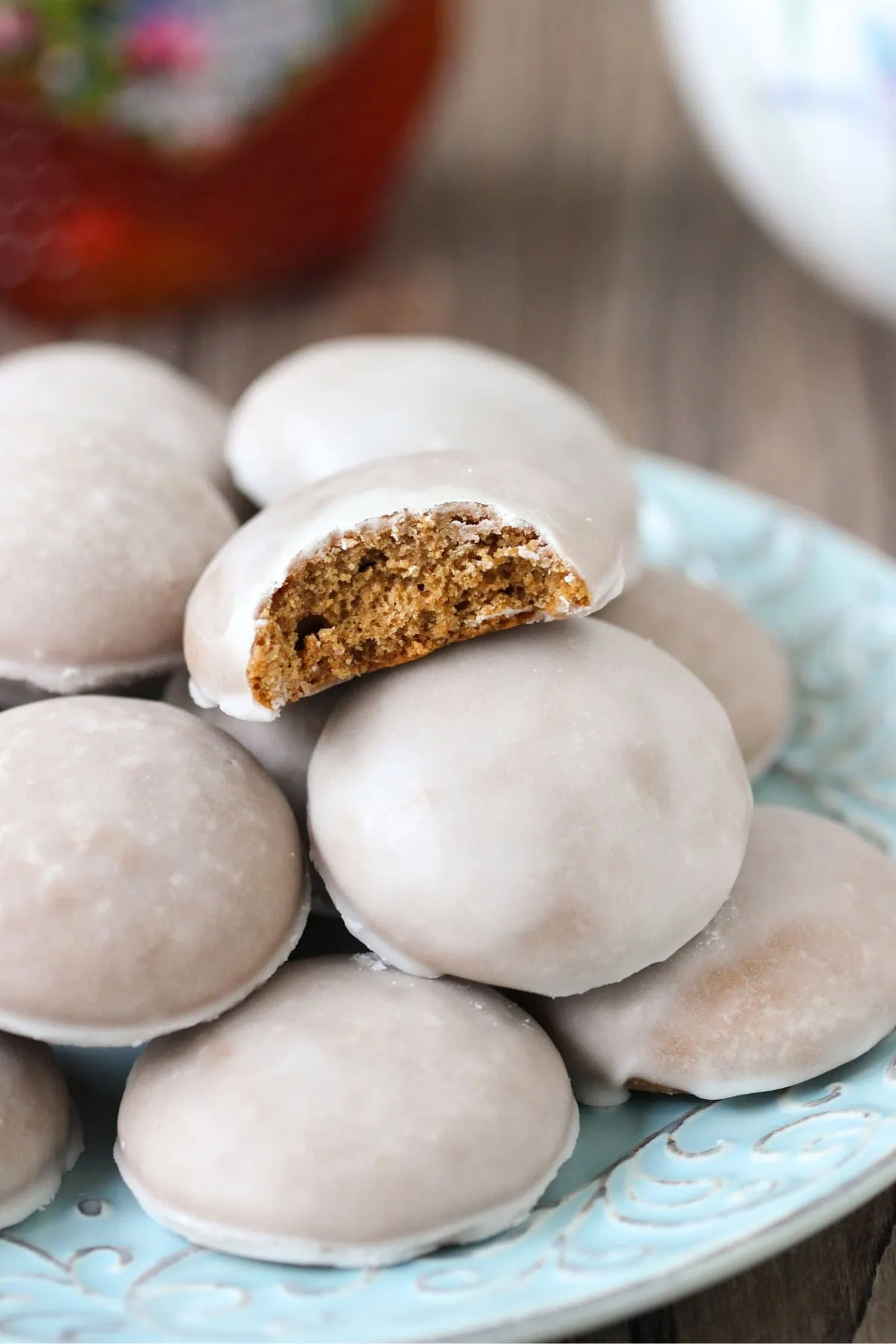

Great easy bread recipe! Tastes delicious as well. Takes a bit of time with the double rise however it’s well worth it.
Thanks, Susan! I'm so glad you enjoyed it.
The recipe suggests that the hot water temperature be 330-345 degree F. That is over boiling and will kill the yeast. Later, the recipe says that the yeast should be dissolved in hot bath water which is more realistic. I cannot take a bath in boiling water so that temperature must be a typo! I suggest not more than 100 degrees F, even that is too hot for me to put my toes in the water! Please correct the temperature. Thanks
Actually, the recipe is correct, it is only incorrect when you use the feature in the recipe card that doubles or triples the recipe.
If you use the scaling option that comes with the recipe card, unfortunately it’s not accurate and makes mistakes like this. (I wish I could remove this option completely, but that’s not something I can control, unfortunately.) I would recommend never using an automatic doubling or tripling option on any recipe unless you do the math yourself. It’s done by a robot, not a human being and doesn’t calculate things like this correctly at all, such as temperatures, which is such a crucial step.
In the original recipe for 1 recipe, it says to heat the liquid to 110-115 degrees Fahrenheit.
I cant wait to make this!
I hope you enjoy the bread, Shaz.
If you double or triple this recipe do not double or triple the temperature of the hot water like the recipe says. keep it at a 1x batch so you don't kill your yeast.
Hi Candi,
I'm so sorry that's what the recipe card says when you click to double or triple the recipe. That's terrible! When working with yeast, it's very important not to overheat the water. I did write this in the actual blog post too.
If you use the scaling option that comes with the recipe card, unfortunately it's not accurate and makes mistakes like this. (I wish I could remove this option completely, but that's not something I can control, unfortunately.) I would recommend never using an automatic doubling or tripling option on any recipe unless you do the math yourself. It's done by a robot, not a human being and doesn't calculate things like this correctly at all, such as temperatures, which is such a crucial step.
In the original recipe for 1 recipe, it says to heat the liquid to 110-115 degrees Fahrenheit.
Why does my bread smell like wine/ alcohol I have fresh yeast and the water was at 108 degrees, and my flour doesn’t expire until next year?
One of the reasons could be that the dough was overproofed. If it's proofed too long (left too long to rise), sometimes the yeast will smell stronger. It's also not uncommon for the bread dough to have a small amount of wine/alcohol aroma. During the natural fermentation process of adding yeast to bread dough, yeast breaks down the carbohydrates in the dough into alcohol and carbon dioxide. It shouldn't be really strong though. If it really bothers you, try using less yeast, although the bread may not rise as much. Usually though, it's because it was proofing too long, became over-fermented and then smells sour. I hope that helps.
Hi Olga! I want to try this recipe but I do not have a stand mixer. Would I be to use a hand beater and then finish off mixing by hand?
Donna C.
Hi Donna,
Yes, you can definitely mix it by hand. Just knead it longer and it will work great. I don't recommend using a hand beater, because it isn't strong enough for bread dough.
Thank you! I just tried this recipe and it turned out great.
Wonderful! So happy you were happy with this bread recipe:).
Hello, I am wondering if I can use a Dutch pan instead of the loaf pan?
I have never tried it with this recipe, so I can't tell you if it will work or not from experience. Let me know if you try it.
I thought I left a comment days ago but apparently I didn't! Made it exactly per directions (used scale for flour both times) for the first batch - wonderful 1st and 2nd rise and then half of it fell in the oven during baking. It was delicious but looked ugly...lol Second batch yesterday and I subbed 1/2 of the flour for whole wheat and added 1/2 tbsp baking powder to (hopefully) even out the added weight of the more dense wheat flour. It didn't rise as much either time but it was over the rim of the bread pan, and again it fell during baking, this time completely. My yeast was new and I proofed it before adding other ingredients for both batches. Both loaves tasted wonderful, but I have never had much luck with yeast breads as a whole anyway.. Any tips or suggestions would be greatly appreciated and THANK YOU for all the wonderful recipes and ideas.
Hi Regina! Sometimes when the bread collapses in the oven, it can be because the bread was overproofed before being placed in the oven, which makes it not as strong and it falls when it's baking. I also don't recommend using baking powder in addition to yeast when making bread. Whole wheat flour naturally won't rise as much as all purpose or bread flour will. If you want to use whole wheat flour, just use the same amount of yeast, you don't need to add any baking powder. If you want it to rise more, use more bread flour than whole wheat flour. It will taste good, just won't be as tall and fluffy as when you use all bread flour. I hope that helps!
Second batch done today. I used half whole wheat flour this time and it didn't rise as much, but still tastes wonderful . ❤️ The first time I followed the recipe exactly and it had a beautiful 2nd rise....then half of it fell when baking ☹️ I have never had any luck with yeast bread but these two were the best tasting by far. Thank you for all the wonderful recipes.
Hands down. This is the best bread recipe!
Thank you, Olga!
Thank you, Alesia! I'm so glad you enjoyed this recipe.
Delicious bread! Thank you for sharing with us
This bread recipe is so delicious! We love it.
Yay! So glad it worked out for you. Thanks for sharing your feedback.
I do not have a mixer, just a portable hand mixer.....can I make it the “old fashioned” way like my grandmother used to do?
Yes, absolutely. You can mix it by hand, but don't use a hand mixer - it will ruin it and most likely kill the motor. It just isn't powerful enough to mix bread dough. Your hands will work great:).
How long do I knead the dough without a mixer?
About 7-10 minutes.
It’s so good! I tried my homemade bread for the first time and it’s delicious! Thanks for the recipe!